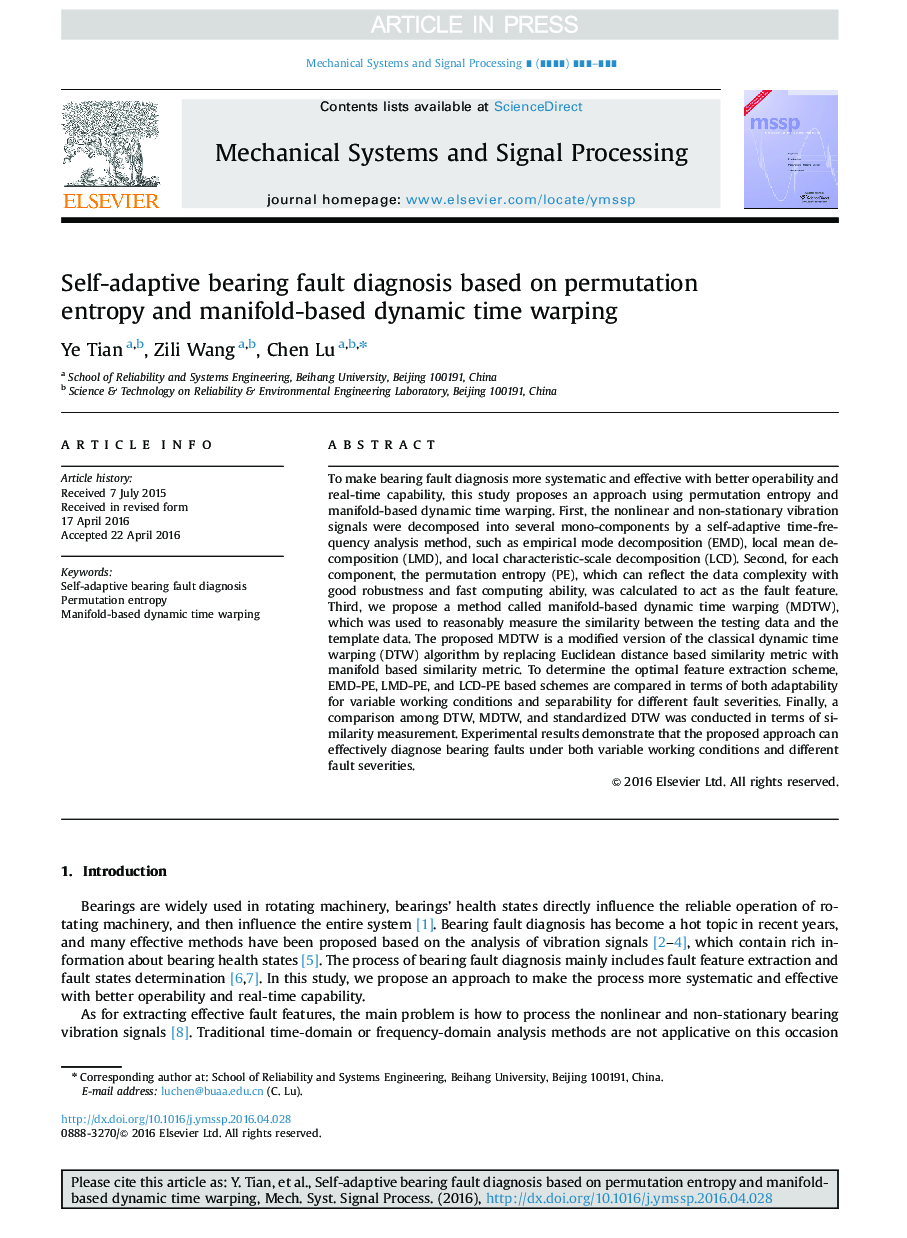| Article ID | Journal | Published Year | Pages | File Type |
|---|---|---|---|---|
| 6953692 | Mechanical Systems and Signal Processing | 2019 | 16 Pages |
Abstract
To make bearing fault diagnosis more systematic and effective with better operability and real-time capability, this study proposes an approach using permutation entropy and manifold-based dynamic time warping. First, the nonlinear and non-stationary vibration signals were decomposed into several mono-components by a self-adaptive time-frequency analysis method, such as empirical mode decomposition (EMD), local mean decomposition (LMD), and local characteristic-scale decomposition (LCD). Second, for each component, the permutation entropy (PE), which can reflect the data complexity with good robustness and fast computing ability, was calculated to act as the fault feature. Third, we propose a method called manifold-based dynamic time warping (MDTW), which was used to reasonably measure the similarity between the testing data and the template data. The proposed MDTW is a modified version of the classical dynamic time warping (DTW) algorithm by replacing Euclidean distance based similarity metric with manifold based similarity metric. To determine the optimal feature extraction scheme, EMD-PE, LMD-PE, and LCD-PE based schemes are compared in terms of both adaptability for variable working conditions and separability for different fault severities. Finally, a comparison among DTW, MDTW, and standardized DTW was conducted in terms of similarity measurement. Experimental results demonstrate that the proposed approach can effectively diagnose bearing faults under both variable working conditions and different fault severities.
Keywords
Related Topics
Physical Sciences and Engineering
Computer Science
Signal Processing
Authors
Ye Tian, Zili Wang, Chen Lu,
